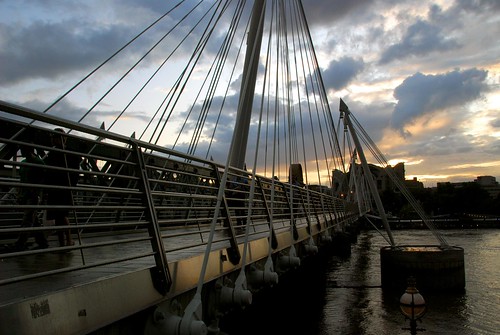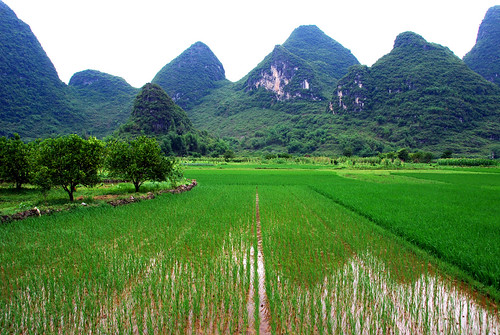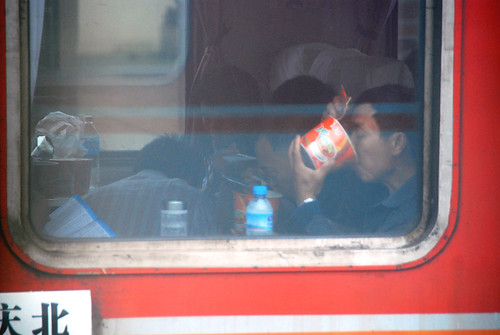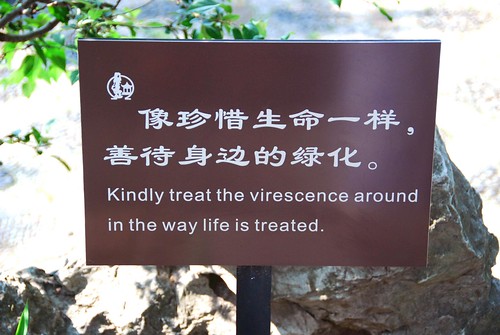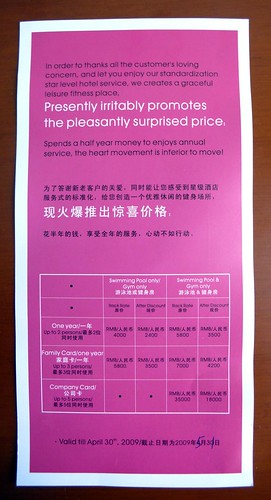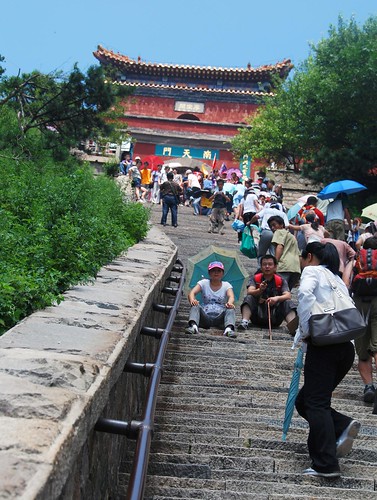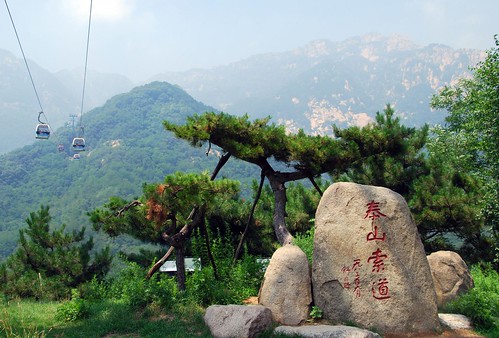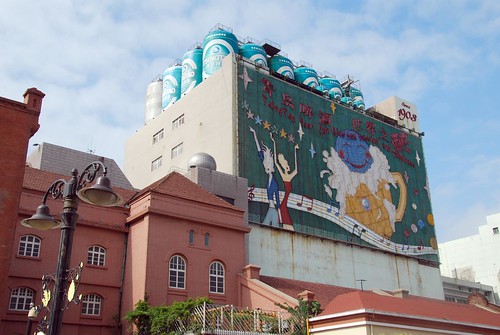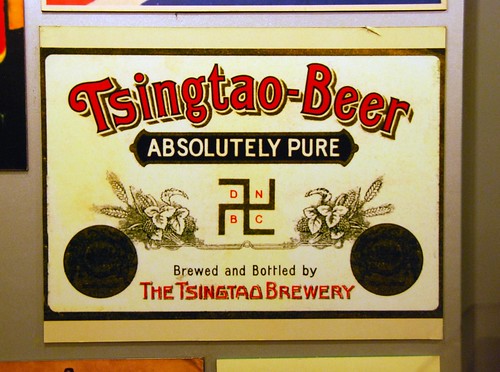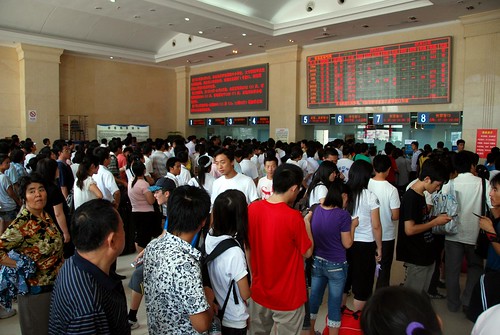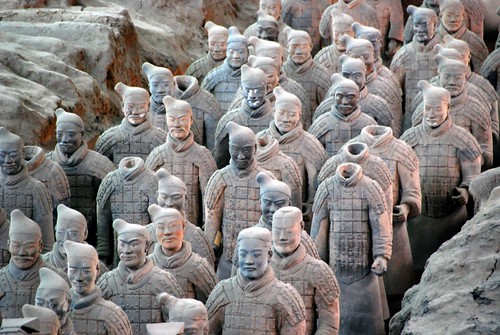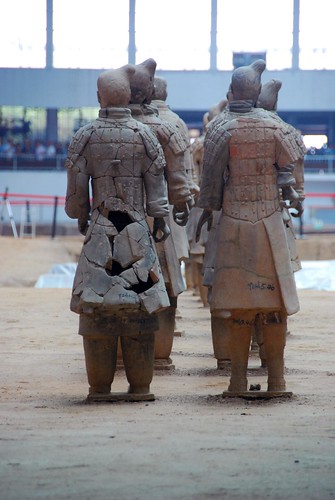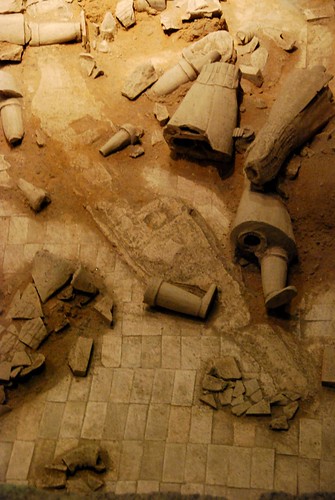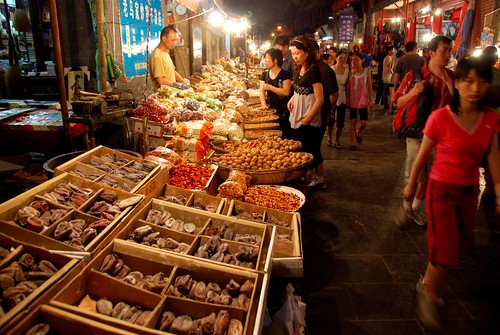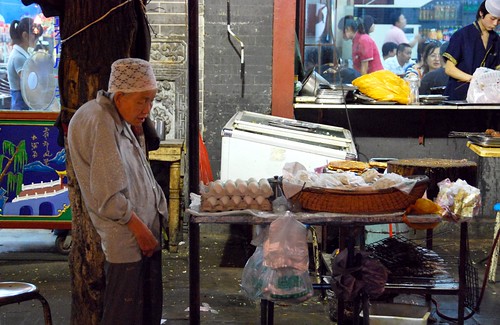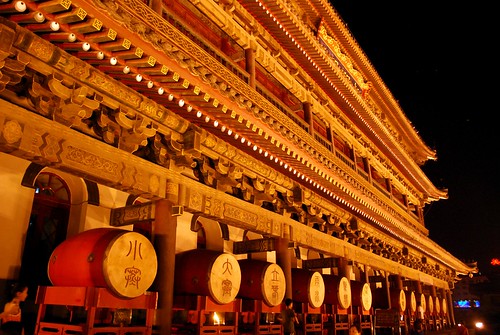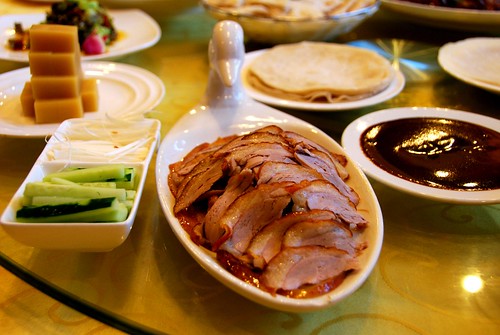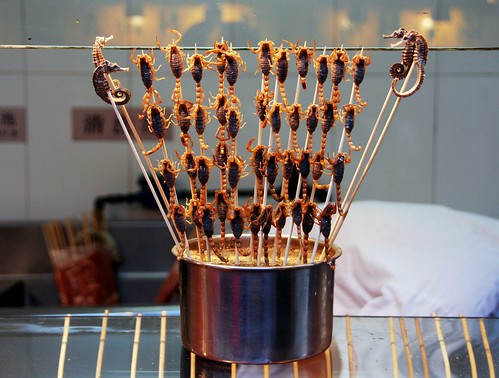I was mistaken when I thought that London wasn’t exotic enough. Though after 6 months in Asia, I suppose even white bread and vanilla ice cream can seem like curiosities. I just couldn’t get over the diversity—Europeans, Africans, Russians, people from the Middle East…all of them rushing around in this busy city. One of our most fascinating outings in London was our visit to Harrods (the famous department store), where we watched women in full burka shopping for designer threads and expensive lingerie (which begs the question…why bother spending $500 on a shirt if no one is going to see it?).
In fact, our friends in London are a mini-United Nations in and of themselves: Chi-Chi (our fabulous and generous Chinese American host), Conall and Mariam (Irish and French-Caribbean), Brendan and Eela (American and Persian), and Corre Marie and Matt (Japanese American and Irish/English). And we made new friends with an English/Argentinian couple.
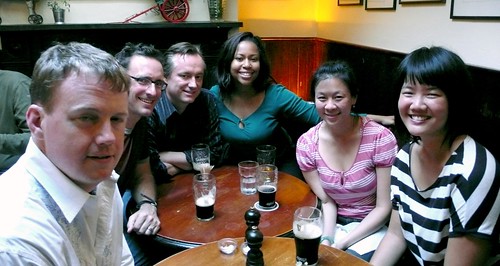
Brendan, Jeremy, Conall, Mariam, Chi-Chi, and Hope enjoying pints at The Cow.
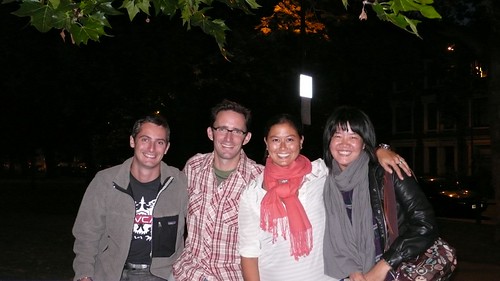
Matt, Jeremy, Corre Marie, and me.
Most of our buddies just moved to London in the past year, but Corre Marie (who Jeremy has known since she was in diapers) and her boyfriend Matt have lived in London for a while, so they helped explain all that confusing passive aggressiveness to us (Matt: “The English, man, they’re dour! They’re dour!). Matt’s opinion was confirmed after a late night out with the English/Argentinian couple: some guy tried to pick a fight with Jeremy after the two accidentally collided, despite the fact that he was a head shorter than either of us (he threatened both of us with “I punch you in the face!”). I’m sure the pint or ten he threw back at the pub didn’t help matters. Hey, Americans may be annoying tourists, but at least we’re loving drunks.
But I suppose any big city is going to have its share of cranky people, and luckily, we didn’t have any further run-ins with drunken killjoys. In fact, we had a great time enjoying this fabulous city…wandering around different neighborhoods by day and going out with friends at night.
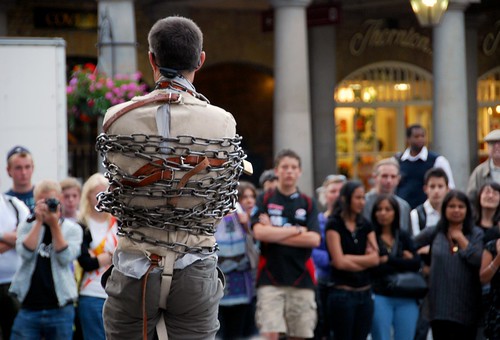
Street performer, Piccadilly circus.
Many of the sights around London charge exorbitant entry fees, which can be as high as £20 or almost US$32 per person! So we didn’t do a lot of the “typical” London sightseeing like the London Tower, Westminster Abbey, or London Eye. We did, however, visit Buckingham Palace, even though the Queen charges a royal fee for the privilege (£16.50 or US$26 per person)! The audio tour is narrated by members of the royal family, and it was a good thing to do once in our lives, though if/when we return to London, we’ll probably save our pounds for a pint.
Luckily, all the of the museums in London are free, and very impressive. I adored the V&A and its fascinating display of the historic and the futuristic. I was particularly enamored with the fashion and footwear collection (is anyone surprised?), which had 18th century corsets on display next to work by current student designers at the Royal Academy of Art. The V&A also had a fabulous temporary exhibition called Telling Tales, which was all about the role of fairy tales in contemporary industrial design. AWESOME.
Surprisingly, I was a bit disappointed with the Tate Modern. Mostly because the curation seemed a bit chaotic to me, and the pieces seemed too close to each other. Let the art breathe, Tate Modern!
Both Jeremy and I loved the Natural History Museum, though mostly for the stunning building, with its Romanesque archway entry and the collection of stone animal sculptures decorating the exterior of the building.
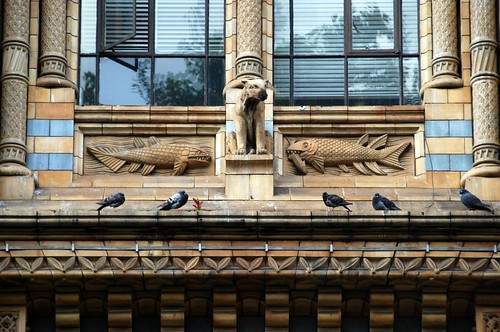
Exterior of the Natural History Museum.

A skeletal scene inside the museum.
The parks in London are also a budget-friendly way to pass the time. Richmond Park is by far the biggest and most fabulous in the city. With deer!

The spotted deer in Richmond Park.
We also wandered around some of the markets. Spitalfields, billed as a market for up-and-coming fashion designers, actually has a bunch of cheap made-in-China clothing for a sale. Needless to say, it was a disappointment. Portabello Market was a bit more “English authentic”, but so crowded that it was not enjoyable (unless you like that sort of thing).
Speaking of crowds, the Tube is fabulous, but can someone please do something about the ventilation in there?
We spent 10 days in London, enjoying the cool weather, eating fun Western foods that we hadn’t eaten in six months (like hamburgers and bacon), and going out with friends. London is a gorgeous city with fabulous things to do and see. Just try not to bump into any drunk English blokes. ![]()

Gordon’s (London’s oldest wine bar), housed in an underground cave.
Did you know?
- The UK ≠ Great Britain ≠ England. The United Kingdom is made up of three distinct “home nations”: England, Scotland, Wales, and Northern Ireland. Note that England is only one “home nation” within the United Kingdom. Great Britain consists of the “continental” home nations of England, Scotland, and Wales. Therefore, Great Britain + Northern Ireland = United Kingdom.
- The queen “owns” all the animals in London’s parks. So if you accidentally kill a duck or a deer, you can be tried for treason. Really.
- Brits do not pronounce the “ce” or “w” in the middle of a sentence. So “Chiswick” becomes “Chizzick” and “Worcester” becomes “Wurster.”
- English food is good now. No really. Seriously. No, I mean it. I know it will be hard for most people to believe, but I swear it’s true. No, you’re not going to get good grub if you walk into the average sandwich shop on the street. But the rise of gastropubs means that most of the time, you can get a good meal with your pint without even looking that hard for it.
Check out our photos from London:
I didn’t want to go to London.

Can this photo scream “London” any louder?
It’s not that I wasn’t interested—I’ve never been there (Jeremy has) and I was curious about the place, but just not now. I didn’t feel like it was very exotic—the UK is a place we could travel with kids later on in life, and I was gung ho to continue roughing it.
Two months in China changed my mind.
More accurately, two months of intense heat in China changed my mind. Originally, our around-the-world tickets had us flying from Beijing to Amman, Jordan. Call that poor research on our part—flying to the middle of the desert in July? Not smart. We needed to kill some time while the planet cooled down a bit before heading to the Middle East, and we had a friend offer us her place in London (which is the only way it would have been affordable for us to visit). So why not? We chose Qingdao based on the climate, why not London?
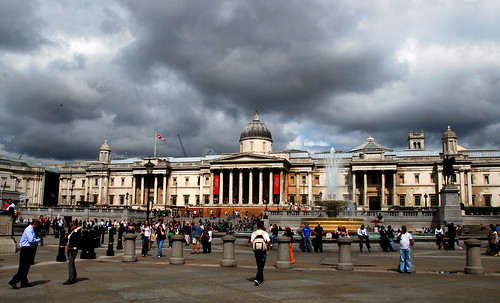
Ominous-looking clouds over the National Gallery. If you ever feel like complaining about the miserable weather in the UK, just spend two months in the oppressive heat of China. Then London will feel like heaven on earth. A nice, cool, sometimes rainy heaven on earth.
Plus, China was tough, and we were kind of over it by the end (it’s worth noting, however, that the misery has diminished with time—we think of China fondly now). As London loomed closer in our calendars, I started positively salivating at the thought of indulging in Western “comforts” like throwing toilet paper in the toilet and drinking tap water. And, I felt there was a kinship between Americans and Brits. I imagined landing at the airport and feeling like I was in a home away from home. They’ll welcome us with open arms and we’ll all make jokes in English and maybe they’ll offer us a spot of tea and crumpet. Right?
Not so much.
Of all the immigration checkpoints we’ve been through, I’ve never been grilled as hard as I was entering London. Why was I here? (Tourism.) Where am I staying? (With a friend.) How long am I planning on staying? (Three weeks.) What was I planning on doing? (I don’t know yet.) You are going to be here for 3 weeks and you don’t know yet? (Um, I guess I’ll go see Buckingham Palace?) After about 5 minutes of rapid questioning, the immigration officer was finally satisfied and let me through. I found out later that they go through this whole rigamarole to see if there are any inconsistencies in your story. You know, just in case your occupation starts with the letter “T.” And rhymes with “herrorist.”
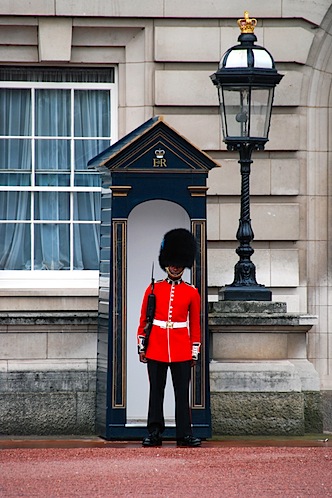
Um, excuse me, but I think your hat is a little crooked.
I quickly found out that Jeremy too got yelled at by the immigration officer for not going up to the window with me (I guess families are supposed to go through together). And then some lady bumped into me and said “Watch where you’re going.” Suddenly the chaos of China isn’t looking so bad…
Despite the shaky start, we ended up having a great time in London. It didn’t hurt that we have a lot of friends here (and made new ones). Our friend Chi-Chi generously let us crash in her guest room for a whopping 10 days, so we felt right at home. Minus the passive aggression.
Oh, the highs and lows of traveling through China! There were definitely some lows (see Qingdao: Confronting Identity in a German Town in China and Yangshuo: Anatomy of a Scam), but the peaks and the valleys seem to flow into one another so that you’re no longer sure what hurts so bad and what hurts so good. Our Yangzi Three Gorges River Cruise is the perfect metaphor: we spent three days on a 4th class river boat with a bunch of half-naked Chinese people who only stopped smoking cigarettes, spitting, and playing mahjong long enough to follow a megaphone-wielding tour guide around in 100 degree heat. Yes, it was unpleasant at the time. But even now, almost 3 months after the fact, we bring it up in conversation almost every week and giggle at the absurdity of it all. It’s sort of like running a marathon: when you’re in the moment, you can feel blinded by the pain, but once it’s over, you’re really glad you did it.
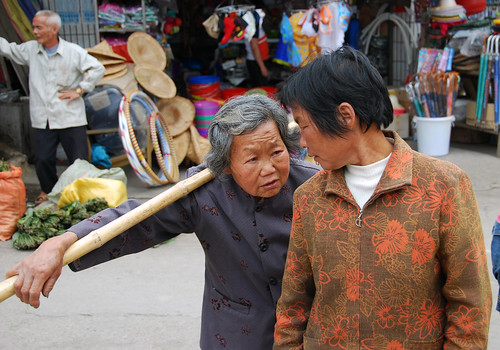
Ladies at the market near Hakka House.
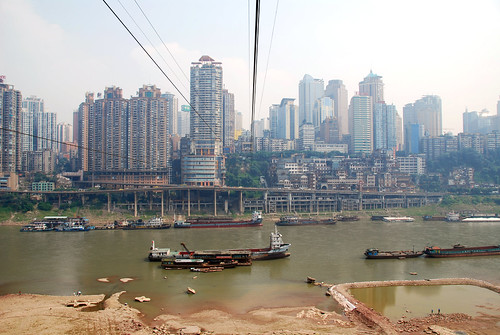
View of Jiefangbei from across the Jialing River in Chongqing.
As Jeremy put it, “of all the countries we’ve been so far, China is the one I would have most regretted missing.” China is relevant, y’all. It is freaking fascinating there right now, a place where nothing stays the same for more than a few weeks, the government is still messing with people’s civil liberties in exchange for making them rich, and people are spitting on the street in their US$500 Gucci heels. We think every Westerner should go. Observe. Learn. And see what a country of 1.3 billion people all working together to pull their country up by its bootstraps looks like. There’s no place like it.
Days spent here: 43 (26 days in Southern and Central China, 17 days in the North)
Highlights: Huangshan, Yangshuo (for Jeremy), Yangzi River Three Gorges Cruise (somewhat painful, but also unforgettable), Beijing
Places we would like to visit next time: Western China (i.e., Tibet, Xinjiang, Jiuzaigou) and Mongolia
Average daily expenditures (for two people): US$213 for 13 days on our 5 star hotel/fancy eating tour with my parents (heavily supplemented by Jack and Wendy—thanks Mom and Dad!), US$120 for the remaining 30 days on our usual 1 star hotel/street food backpackers tour
Prices: China’s pretty reasonable. Food is very inexpensive (from US$5-10 per person per meal) and accommodation can be pretty cheap too. On average, we paid about 200 RMB (approx. US$30) per night for a double room ensuite. We used hostelbookers.com and Ctrip.com to book our accommodation, and we got great deals using both websites.
Weather: Do yourself a favor and don’t visit northern China in June or July, unless you like your searing heat with a dash of crushing humidity. Don’t say we didn’t warn you.
Language: There are 300 million people in China learning English right now—that’s the same number of people that live in the US! But you wouldn’t know it from traveling in this country. If you don’t speak Mandarin, polish your pantomiming skills before you go. On the other hand, if you are a wai guo ren with Mandarin speaking skills, prepare to be worshipped. The people will fall all over themselves with delight.
If you do speak Chinese, be warned that you will need to overcome not only regional accents, but regional phrases as well (ex. if you are from Taiwan, you will call a spoon a tiao gen, but a Beijinger will refer to it as a shao zi). For instance, I had the following conversation with a person in Taishan (in Chinese, of course):
Hope: Excuse me, do you know if there is a pharmacy around here?
Random Person: A what?!? A pharmacy?
H: Yes, a pharmacy.
RP: I don’t know. Why don’t you go ask over there [points to a pharmacy], at the medicine store?
Oh yeah, and if you’ve ever been interested in visiting China, go now, before all the Chinglish gets wiped out.
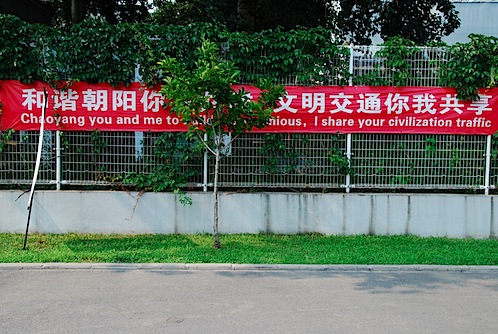
One day, China will be void of gems like this (reads: Chaoyang you and me to build harmonious, I share your civilization traffic)
Food: Outside of our eating tour with my parents and the food in Beijing, we weren’t too impressed with Chinese cuisine. We said it before and we’ll say it again: if you want the best Chinese food in the world, go to Taiwan.
That being said, China is a great place if your culinary hero is Anthony Bourdain. We got over ourselves really fast in Chongqing, where my aunt’s friends took us out to meals involving pig brains, duck tongues, cow rumen, and various other intestinal elements. You can also try snake, turtle, or live scorpions. Yum?
Transit: China’s got a pretty good rail system for such a big country. Chinese trains are not quite as nice as the trains in Taiwan or Japan, but they’re not as bad as the trains in Vietnam, either. For long journeys, you can purchase tickets for a soft sleeper (most expensive), hard sleeper, soft seat, or hard seat (cheapest). Soft sleeper trains are pretty nice, with 4 beds in each room, AC, clean sheets, and relatively clean bathrooms. “Hard sleeper” sounds scary, but it’s worth noting that hard sleeper beds aren’t hard—the mattress is just a little bit thinner. The biggest difference is that there are 6 beds in the hard sleeper rooms rather than 4. Since J and I are tall, we usually traveled in the soft sleeper trains, which are still relatively cheap, even though tickets are 1.5-2 times as much as the hard sleeper carriages.
For information on routes, schedules, and prices, check out ChinaTravelGuide.com’s fabulous online train schedule database.
The bigger cities like Shanghai and Beijing have subways, but Shanghai’s subway system has pretty bad signage and confusing connections. Beijing’s subway did not reach most of the sites in the city center, so we did a LOT of walking or took taxis. Luckily, taxis are very cheap in China’s capital city, but you’re going to have to speak Mandarin in order to get where you want to go.
Internet: Web access is great all over China—as long as the government isn’t blocking the site you want to surf. YouTube, Flickr, Facebook, Twitter, and all blogspot sites got blocked for periods of 3-10 days while we were in China due to the 20th anniversary of Tiananmen Square and the deadly Uighur protests in Xinjiang. Annoying.
Culture: Get ready for a culture shock. Get ready for people constantly cutting in front of you in line. Get ready for men walking around in inappropriate places with their shirts hiked up above their nipples. Get ready for spitting. Get ready for half-naked babies pooping in the street. Get ready for smoking. Get ready for LOUD. That being said, once you figure out how things work, it’s easy enough to deal with them.
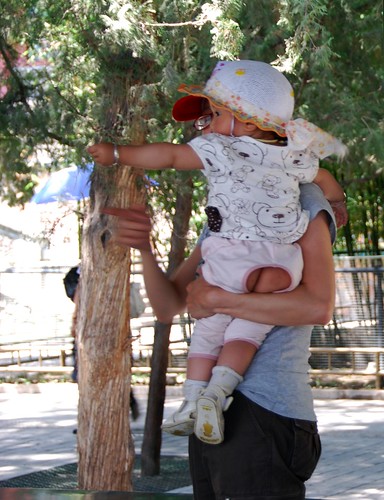
Baby at the Summer Palace wearing the poop pants.
One fascinating thing about traveling through Taiwan and China is that we got a firsthand look at how differently these two countries developed culturally. The Taiwanese are exceedingly polite, aggressively helpful, and overly concerned about safety. The Chinese on the other hand, are rude and pushy, frequently uninterested in helping you, and some of the craziest drivers in the world. Now, you could point to many reasons for this cultural gap: the fact that it was the intellectuals and people of the upper classes that moved to Taiwan in 1949 to escape Communist persecution, the effect of 60 years of Communist rule on the people of China, etc. But I’d like to propose a different hypothesis: It’s the sheer numbers. There are 57 times as many people in China as Taiwan. You would get CRUSHED in China if you were nice and helpful to people all the time. The result is, if someone vouches for you in China (as my aunt did, in our case), you get extreme, excessive kindness from people that you may only marginally know you. But those same people on the street may wave you off if you ask for help. Yes, it’s a contradiction. But it’s a fact of life here. All I can say is, try to make friends with a local. If you do, you will get the red carpet rolled out for you.
In short: It’s not always pleasant, but that doesn’t mean it’s not a great time.
Traveling through China is: Fascinating. At times frustrating. Shocking. Challenging.
And funny.
Yes, the moments of occasional agony will be broken up by daily chuckles and frequent delight. After the frustration has faded from the mind, one memory will persist: the Chinglish.
Chinglish tends to fall into one of three categories; the first being “Inadvertent Misspellings”:
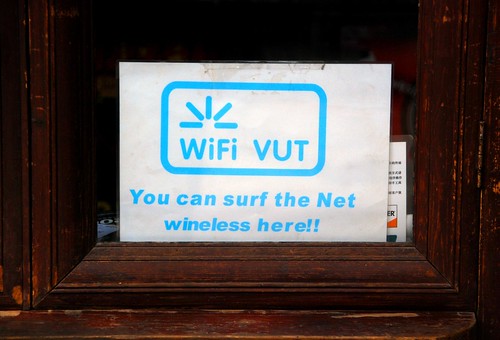
Yes, but do I WANT to surf the internet wineless?!?
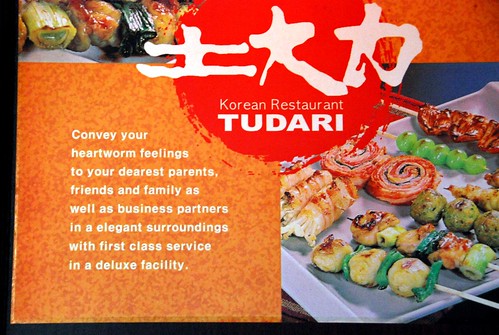
My dearest parents, friends, family, and business partners are definitely going to hear about my heartworm feelings.
Then there’s the “I Get What You Mean, But It’s Not Quite Right” category:
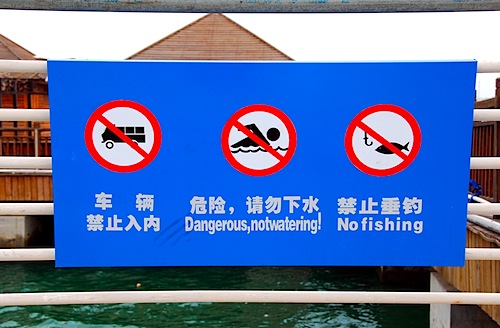
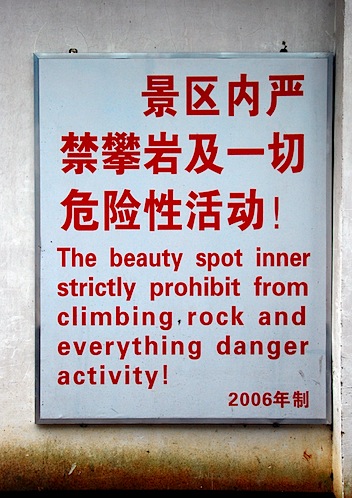
I always try to avoid everything danger activity.

This is where the internet comes from.
And finally, the “I Don’t Even Know What is Going on Here” group:
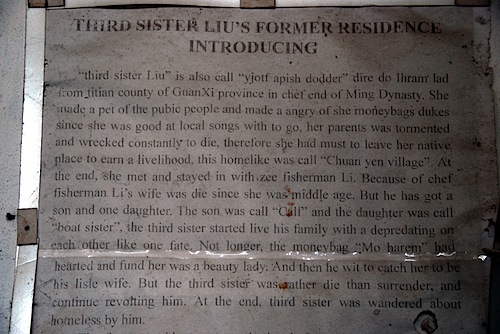
I’m glad my nickname isn’t “yjotf apish dodder.” Also, I am sure the pubic people did not appreciate being made her pet.
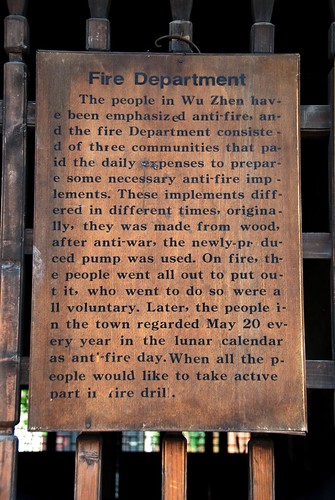
As a graphi-
c designe-
r, this sign r-
eally disturb-
s me.
See the rest of our Chinglish/Engrish photos here:
Northern China’s answer to Huangshan is Taishan, one of China’s 5 most famous mountains. Tons of famous Chinese people—including Mao Ze Dong and Confucius—have summited this holy Taoist mountain, which, frankly, is no small feat, given that the central route up Taishan is pretty much a sweaty Stairmaster workout of 6,660 steps. It is said that if you make it to the top, you will live to 100 years. Not a bad deal, in our opinion.
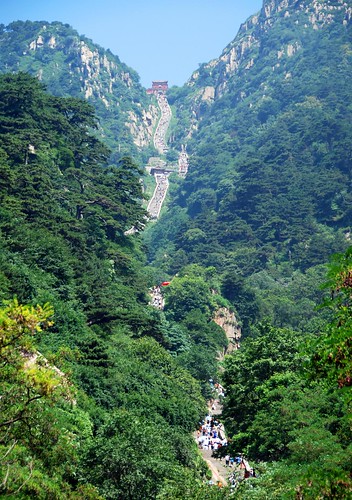
The path to the top of Taishan.
The promise of long life has proven to be enough to get hordes of Chinese people up this mountain, even if they hike it high heels, skinny jeans, or heck, even their underwear.
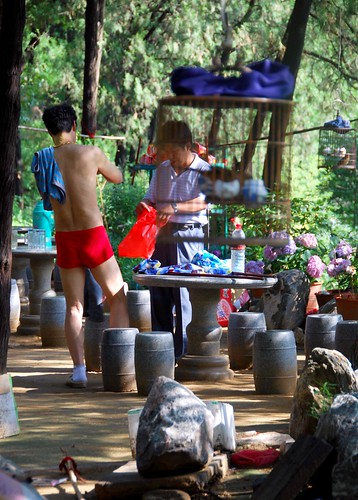
Only in China: Underwear Man hiking Taishan in his manties.
Funny thing is, Underwear Man attracted less attention than Jeremy, who I swear must have been the only wai guo ren on the mountain that day. On top of that, Jeremy took off his shirt (hey, it was hot!), and I don’t know if it was the hairy chest or the shirtlessness or his massive pectorals (Ed note: Jeremy made me write that) that had all the Chinese people picking their jaws up off the ground.
Taishan is very similar to Huangshan in that the sunrise and the cloud ocean are the main attractions. We didn’t see the sunrise this time—staying on the mountain on the mountain is expensive—but we did get enveloped by those famous clouds when we reached the top.
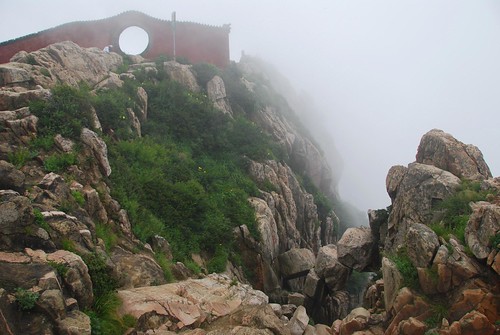
The summit of Taishan enveloped by that famous cloud ocean.
As in Huangshan, people hiking this mountain also superstitiously place locks on the chain link fences as an insurance policy for their marriage. Judging from the amount of locks we saw, it looks like more people hike Taishan than Huangshan, or there are just more suckers in Taishan. ![]()

Locks galore on Taishan’s fences.
Also similar to Huangshan, there are bang bang men hiking up the mountain with bottled water, their repeated trips up and down the mountain permanently warping their skeletons into painful-looking shapes.
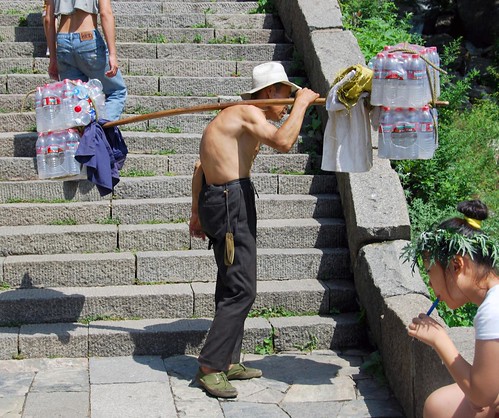
Yet another reason why plastic bottles are bad for humanity.
Hiking Taishan is a fine way to spend the day, though we prefer Huangshan to its norther counterpart. One route up means the stairway becomes very crowded, and given that you can also reach the top via a bus/cable car combo, the summit is swamped with domestic tourists who are still hoping to get their 100 years without breaking a sweat.

The hordes at the top of Taishan.
It took us four hours to hike to the top of the mountain, and a quick 15 minutes to get back down the mountain using the cable car and bus option. Not bad for an extra 60+ years on this extraordinary planet, eh?
Where we slept in Taishan: Actually, we slept in Tai’An, because staying on the mountain was a little too spendy for our budget. No matter, Taishan is easily done as a day trip, though if you want to see the sunrise, you’ll need to spend the dough…or hike through the night (survey says: NO). We booked Dongdu Hotel via ctrip.com for 168 RMB (for a double with bathroom ensuite). Not a bad deal for a three-star hotel. Rooms have little character, but they are spacious, reasonably clean, and some have views of the mountain. Plus, each room has free plug-in internet access and a water cooler dispensing drinking water (a nice touch in China!).
Since Tibet was out as our next destination, where to next? Mongolia? Train tickets were sold out for the entire week. Xinjiang? Tickets also sold out (and thank goodness we didn’t go because the deadly protests in Urumqi broke out a few days later). Here’s how we decided on our next stop: we consulted Weather Underground and looked for the coolest temps in Eastern China. Qingdao it is! Hey, we went to Malaysia for a good bowl of curry, why NOT choose a place based on the climate, especially after the heat in Beijing and Xian made us cry “uncle.”
Qingdao is a former German settlement in Eastern China known for its beach and its beer (which you may know by its Wade-Giles spelling, Tsingtao). It rained pretty heavily while we were there, but honestly, we didn’t care. As long as the the mercury didn’t climb above 90°, we were happy campers.
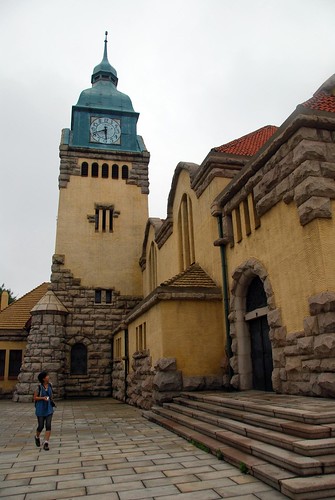
The Protestant Church in Qingdao.
Both German architecture and Chinese people on the beach are novel sights in China, which makes Qingdao a rare place indeed. But the brewery! Totally worth it, even though they were stingy with the free samples (a mere half pint!). The majority of the self-guided tour is pretty standard fare: the history of Tsingtao, different advertising campaigns, bla bla. What made the tour interesting is the actual, functioning bottling plant. I swear Jeremy and I stayed there for half an hour watching them bottle and can the Tsingtao brew. We’re nerds like that.
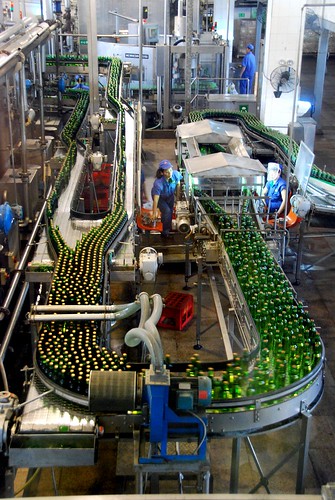
The Tsingtao bottling plant in action.
The other highlight of the Tsingtao brewery tour was the Drunk Room. Basically, it was a room where the floor was slanted. Simple but surprisingly effective! We totally felt drunk (it was BEFORE the tasting room, I swear)!
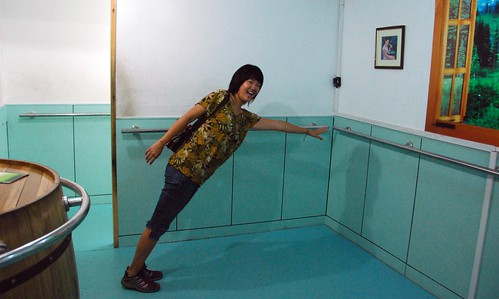
Me in the Drunk Room at the Tsingtao brewery.
I can’t say we loved our time in Qingdao…the city itself is really spread out, and beyond the brewery there isn’t much to do besides wander around the parks (which, I have to admit, are pretty nice), or try to find some German food to eat (surprisingly difficult in Qingdao! We only know of one place: Monnemer Eck, which is was dead empty when we dined there. Good food though!).
But there is one reason why this Chinese city will always stick out in my mind: I had a total meltdown trying to leave Qingdao. Are you ready for this?
We decided on our next destination (Taishan), and learned that there was both a bus and a train that could get us there. The express train left at 6AM, but only took 3 hours. The bus took 6 hours, left several times a day, and was cheaper than the train ticket. So J and I decided on the bus. Only thing is, NOBODY seemed to have any idea what time the bus left. There was no telephone number you could call, no schedule, and the bus station was about 15km north of the city center, so it wasn’t really convenient for us to hop over and ask. Whatever, we’ll just show up at the bus station the next morning, right?
So that’s exactly what we did. We got there around 9:30AM only to find that the next bus leaves at 12:30PM. Not wanting to wait 3 hours in the station, I call the train station and find out that there’s a non-express train leaving at 11AM. We hop in a taxi to the train station and wait in this line for tickets:
By the time I get to the front of the line, train tickets are sold out. Great! Back to the bus we go.
Over at the bus station, the saleslady tells me that tickets for the 12:30PM bus are sold out; next bus is at 3PM. Double great! We have little choice at this point but to wait 4 hours for the next bus. At least there were funny Chinglish signs there to keep us amused.
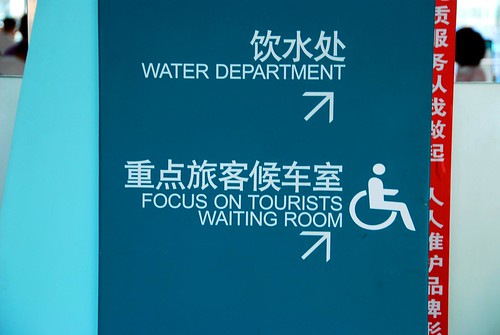
Is this where Chinese people go to stare at the tourists?
At around 2:30PM, I start gathering my things. But hold on a minute…something seems fishy. Why isn’t there a bus at our gate? I examine the ticket (which is all in Chinese), I see the numbers “12:30,” and I start to panic. Did our bus leave at 12:30? Why did the woman at the window tell me 3PM?!? It is possible I misunderstood, but the words for “3:00″ and “12:30″ sound REALLY different in Chinese. So i run up to the information desk, frantic.
Hope: Can you tell me if this ticket is for the 12:30 bus to Taishan? The woman at the window told me it was a 3PM bus!
Information Lady: We don’t have a bus at 3PM to Taishan. This bus left two hours ago.
H: But…but…the woman told me 3PM!
IL: Didn’t you hear them announce that your bus was leaving?
H: I wasn’t listening! I’m not from here!
IL: Well, there are no more buses, you have to leave in the morning.
H: [Almost in tears at this point, and not being coherent] I’m not from here!
IL: [Clearly disturbed by the weird Chinese American girl freaking out] It’s OK, I understand. Here, I can refund your ticket.*
*In retrospect, it was almost unbelievable that she so readily gave us a refund. But I was too distraught to recognize this at the time.
I can’t tell you why I wigged out so badly…the back-and-forth from the bus station to the train station and back again definitely kicked it off, but I think the bulk of it had to do with my growing suspicion that being a Chinese American traveling in China was not an asset, but in some ways a burden. Sure, there are times when it has been awfully convenient to be able to communicate. But there are other times I feel it is easier to have Jeremy’s face in China than my own. I couldn’t shake the feeling that this misunderstanding NEVER would have happened if Jeremy and I were two Western-looking people…they would have tried to find someone who spoke English, or they would have pointed out the time on the ticket.
And maybe that’s why I melted down—because the country to which I have attached my ethnic identity wants almost nothing to do with me. Nobody is trying to take their picture with me (whereas Jeremy’s face must be imprinted on hundreds of memory cards and hard drives around the country). Nobody wants to help me—in fact, sometimes they laugh in my face when I make a “weird” request (like, “can you put some vegetables in my soup?”—what a FREAK!) Or if I don’t understand the phrase they used, they talk about me like I’m not in the room, as if all of a sudden can’t understand anything they are saying. Heck, we even got scammed by my “people.” Do you think a Chinese person would laugh in Jeremy’s face if he mispronounced a word in Mandarin? Doubt it. They’d probably be too busy falling over themselves with adoration.
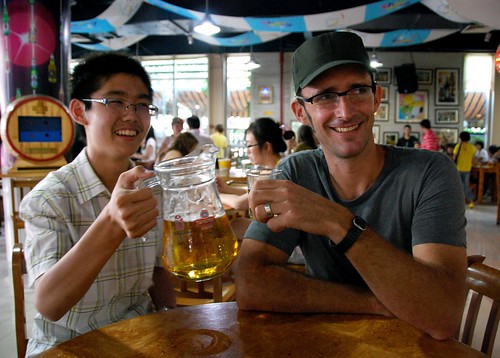
Jeremy posing with yet another unidentified Chinese boy at the Tsingtao brewery.
As a Chinese girl growing up in the USA, I spoke Mandarin at home, went to Chinese school on the weekends, and ate hot pot on Thanksgiving. I thought I was Chinese. Only now, after traveling through the countries of my ancestors, do I find that the truth is much more complicated than that. I find myself grossed out by all the spitting, annoyed with the crowds, irritated by the constant noise, disgusted by the bathrooms…and yet simultaneously, I want to defend this country to the Westerners who complain about the exact same things. I want to explain that Chinese people spit on the floor because they think blowing your nose in a tissue is disgusting. I want to challenge them to live in a country with 1.3 billion people and see what their public bathrooms look like. I want to tell them: just because it’s different doesn’t mean it’s bad.
Oh, the confidence that is inspired by that singular viewpoint!: To always look from west to east and not back in the other direction. Don’t get me wrong—there are many, many gifts that I was bestowed because of my ethnic heritage: a multilingual tongue, respect for my elders, a hair-free body. But that confidence is not one of them.
That day in Qingdao was the only time on the trip I just wanted to click the heels on my ruby slippers and go back home. You know, somewhere I felt like I belonged. Now if I only I knew where that could be…
During the second half of our China trip, Jeremy and I planned on visiting Tibet. The landscape, the people, coupled with our increasing interest in Buddhism, meant that this “autonomous region” in Western China held a strong allure for us. But there are realities to travel in Tibet (besides the obvious political ones), and after doing a bunch of research while we were in Beijing, we decided against the trip. Here’s why.
THE REALITIES
- It’s a long train ride…
…48 hours from Beijing to Lhasa, to be exact. And from all accounts we’ve read, it’s like 48 hours on the Yangzi River Boat (read about our experience here: Three Gorges Yangzi River Cruise: Chinese Immersion School), only sans private bathroom (and if you’ve ever been in a public Chinese toilet, you know that this is no small matter), the aisles are filled with boxes of food and instant noodles (the Chinese love nothing more than to make sure they have enough to eat at all times), and you’re stuck on the train. That being said, it is supposedly a breathtakingly beautiful ride, and if all the other parts of visiting Tibet added up, we totally would have done the trip. But the realities of getting to Tibet are something you really must consider. Sure, you could fly too, but its expensive to do so and you would miss out on seeing the grandeur of the landscape on the way to Tibet. The train track to Tibet is the highest in the world, and each car reportedly contains oxygen masks in case you need help adjusting to the altitude. - The permit application process
Permits have long been required in order to travel to Tibet, and it takes 7 working days to process them, though some places can arrange them for you in as little as 3, while others require a full 10 days. For travelers like Jeremy and I, who barely know where we’ll be tomorrow, much less next week, this restriction did limit our options. Currently, the only way to get a a Tibet travel permit is to sign up for a tour, which brings us to our next point: - In order to travel in Tibet, you must be on a guided tour with the same itinerary as everyone else
Due to the protests in Tibet last year, the Chinese government is being more strict about requiring visitors to be on a tour in Tibet. It used to be that a tour group could consist of 1 person, and we also hear that you used to be able to travel to Lhasa on a tour and then explore the rest of the region independently, but that does not appear to be the case any longer (or if it is an option, it is a very expensive option). We talked to many tour companies, and most itineraries looked identical (with the exception of one Tibetan-based tour company). To make matters worse… - Tibet is a Chinese Disneyland in the summer
The period we wanted to visit Tibet (late July), is tourist high season in Tibet. Every DAY, 12,000 Chinese tourists flood into Lhasa. We just didn’t want our experience of Tibet to be entangled with the pushing crowds and the megaphone-wielding tour guides like so much of China seems to be flooded with these days. In 2009, the Chinese government gave out a large number of travel vouchers to use for domestic tourism in order to stimulate their home economy. Quite frankly, it would kind of break our hearts to see the spiritual center of Buddism turned into a Chinese playground. - It’s not cheap
For the privilege of visiting Tibet, you must be willing to pay at minimum about US$150 per person per day, not including meals. Given that our budget for China was about US$120 per day for the both of us, this really broke the bank. Also, be aware that the cheaper tours are typically offered by government-sponsored travel agencies in Beijing with Chinese (not Tibetan) guides leading the tours, and very little of your US$150 per day will go into the pockets of Tibetans. The government-sponsored agencies are often able to offer lower prices because they have an advantage in procuring train tickets (they are allowed to purchase tickets in big blocks before they are available to the rest of the public…and then sell them to smaller tour operators at marked-up rates).
WHAT YOU CAN DO
We don’t necessarily advocate avoiding a region or country altogether when you don’t agree with the political climate. But we do think it’s wise to do your research and make sure the bulk of your tourist dollars are going to the right places.
- Plan ahead and do your research
Quite frankly, this is where we got stuck…if we would have started researching the Tibet trip earlier, we probably could have made it happen. But waiting until we were in the country to do our planning (which is our normal M.O.) just doesn’t work for Tibet. Read as much as you can on the travel situation, as it can change dramatically from month to month. Here’s an excellent website we found: Life on the Tibetan Plateau. And of course, check out Lonely Planet’s Thorntree Forum. Also, as with any tourism you do, be sure to read up on the local culture so you can be a culturally sensitive traveler! - Make sure you choose a Tibetan operator and get a Tibetan guide
You can make arrangements for your Tibet tour in Beijing, Xian, Chengdu…basically any big city in China. But many of these travel agencies are Chinese-owned, which means very little of your tourist dollars will actually go to the Tibetan people. Make sure your money is benefitting the people who are most affected by your visit and find an agency than actually operates from Tibet. Also, we found that many of the Tibetan-operated agencies had different itineraries, so you won’t be hitting all those gorgeous sights when all 11,999 other tourists in the region are flooding in.
We sincerely hope that the Tibetan travel situation eases up in the future. We would love to one day explore this magical land without the restrictions that have been a reality of the recent past.
I can still remember the first time I heard of the Army of Terra Cotta Warriors: it was in one of my Dad’s 1980’s-era issue of National Geographic. The image of all those soldiers, each one with his own unique facial hair, clothing, and even shoe tread, stayed with me through the years, so I was understandably excited to see the real deal.
The Army is located a few kilometers outside of Xian (sometimes spelled Xi’an), easily reachable by cheap public transport. The complex consists of 3 different pits, with the most extensive excavation in the cavernous pit 1.
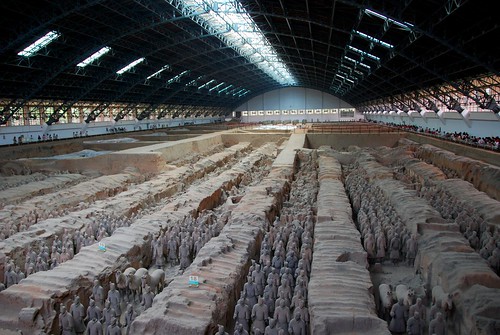
Pit 1, the largest excavation site of the Army of Terra Cotta Warriors.
In pits 2 and 3, you can see excavation work still underway. You can also see where the tomb ceiling has collapsed in parts, crushing some of the figures beneath it.
Nobody knows why the Army of Terra Cotta Warriors exists, and there is something mysterious about the place, especially in pits 2 and 3, where the dim mood lighting adds to the mystery. I mean, why would someone create 8,000 different soldiers and bury them in an underground tomb? Unfortunately, seeing the real deal is probably not much better than watching a really good documentary on the subject. Part of the problem is that you can’t get very close to the soldiers in their natural habitat. Also, the grounds and buildings that the pits are housed in are super modern and, quite frankly, kind of generic and stale…they don’t really match the uniqueness of the site or of the soldiers—you almost forget that you’re at an active excavation site at all! That being said, seeing the soldiers wasn’t a disappointment either…but some famous sites leave you so thrilled that you’d happily revisit in the future, and let’s just say that we’re happy to have seen the Terra Cotta Soldiers once in our lives but we probably don’t need to go again.
Most people spend a day or two in Xian, see the Terra Cotta Soldiers, and move on. We actually ended up getting stuck in Xian—we were right in the middle of tourist high season (in a year when the Chinese government gave out travel vouchers for domestic tourism), and all the onward train tickets to popular destinations were sold out. So, we spent a good number of days exploring Xian, and despite the fact that it was brutally hot, we had a nice time checking out this interesting town.
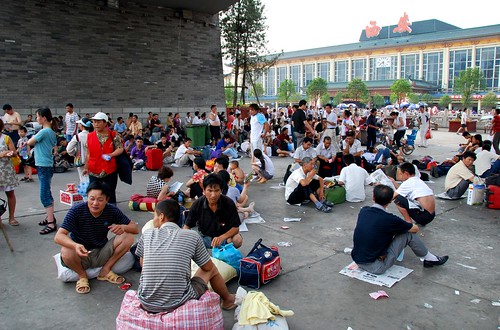
Locals hiding from the sun in front of the train station.
Xian has a large Muslim population, and we were staying right in the midst of the Muslim quarter. We wiled away many an hour (when it wasn’t too hot) wandering around the neighborhood, taking in the local flavor. The Great Mosque, in the center of the Muslim quarter, was fascinating, and we happened to be there during the call to prayer.
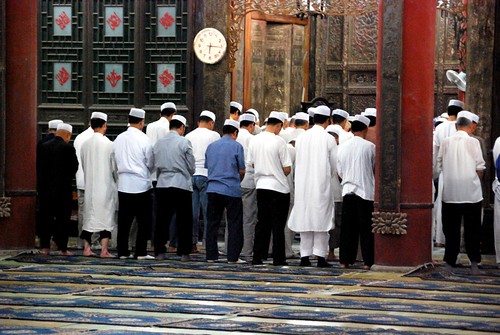
Prayer at the Great Mosque in Xian.
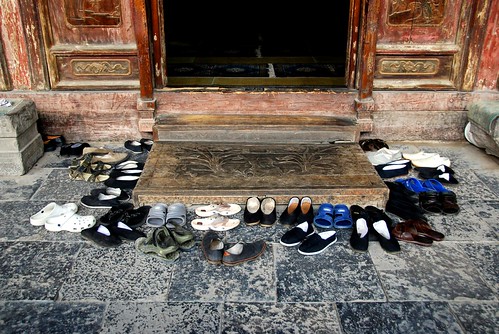
A shoe convention during prayer time at the Great Mosque.
At night, the neighborhood turns into a bustling market with lots of food stalls.
We tried a local specialty called pao mo, which is basically a lamb stew with little bits of shredded bread soaked in the soup. It was delicious, but some of the other Chinese Muslim food we tried was very heavily spiced and it did not agree with Jeremy at all. We ended up spending the rest of our meals trying to find more conventional Chinese fare, which was quite difficult in the Muslim quarter. At one point, we were so desperate that we ate at Subway (though, to our credit, we did pass up Pizza Hut)! I have never seen Jeremy so excited for a 6 inch sub.
Xian actually has a bunch of stuff that would interest a tourist: the Bell Tower, Drum Tower, Big Goose Pagoda, and the Old City Wall, just to name a few.
Unfortunately, it was so incredibly hot while we were there that we spent most of our days waking up early, going out for a few hours until we couldn’t stand it anymore, then hiding in our hotel until the sun went down and the temperatures became bearable again.

This is how hot it was in Xian.
Hey, at least we figured out what our upper temperature threshold is: about 99°F with about 75% humidity. Ouch.
NOTE: We’re switching things up a bit on the picture front! Since you probably don’t want to wait so long to see our photos, and you probably don’t want to see all 5 gajillion photos we’ve taken in a country at the very end, we’ll be adding Flickr slideshows for certain individual destinations! We’ll only do this for select destinations, just to keep you on your toes. ![]()
Check out our photos from Xi’an, China:
Since I already wrote a book about your typical homestyle Northern Chinese fare when we were in Taiwan, I’m not so much going to explore the What (as in What is good) of Beijing cuisine, but rather, the Where (as in Where we ate). The food in Beijing is the best we had in China (though to be honest, the best Chinese food is still over in Taiwan).
First things first: China is a huge country, and there are many regional differences in speech, appearance, and yes, diet. But there is one major difference between the north and the south when it comes to cuisine: the north is all about noodles, and the south is all about rice. This is a common explanation for why people in the north tend to be taller than those in the south (take a wild guess where my freakishly tall family is from). I’m not exactly sure why a noodle-based diet would result in a taller population, but if I had to take a guess, I suppose it’s the egg protein in the noodles. Anyway, because meat was more scarce in the past, and because people in the south eat rice as their carb, southern cuisine tends to be very oily. Hey, people need to get their calories somewhere.
This could be the reason why J and I preferred food in the north. Our Northern California palettes prefer light and fresh over heavy and rich. This is not to say we don’t like rich foods—after all, I wouldn’t exactly describe ramen as “light and fresh.” Rather, we just like our food to taste like itself (we want spinach to taste like spinach and not like oil).
That being said, we ate a whole lot of stuff that tasted like Peking duck while we were in Beijing. ![]()
Our first taste of Peking duck was our meal out with my aunt and uncle at our hotel’s (King Parkview Hotel) adjoining restaurant, which, surprisingly, turned out to be quite good! I’ve had Peking duck in the States before, but it is totally different experience in Beijing. The process begins by choosing a duck, and then a person that I can only describe as a duck surgeon comes out and carves your bird into paper-thin slices.
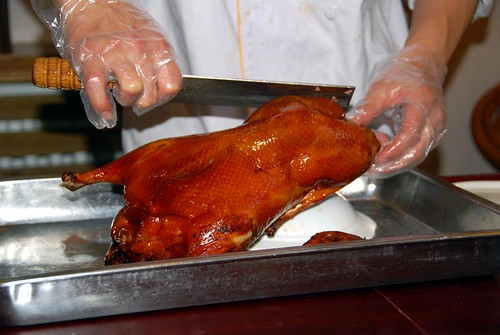
The duck surgeon hard at work in the King Parkview Hotel Restaurant.

My aunt (daughter of my Nai Nai’s older sister) and uncle in front of the Bird’s Nest. Aren’t they cute?
The paper-thin slices of Peking duck are then usually sandwiched between a small piece of bread with some hoisin sauce and additional goodies. In the States, these “additional goodies” consist of spring onion (bo-ring!). But Beijing puts the “good” in “goodies,” as at Hua Jia Yi Yuan on “Ghost Street” or Gui Jie (one of the most famous eating streets in Beijing), where you get all kinds of fun treats, like cucumber, pickles, even pineapple!
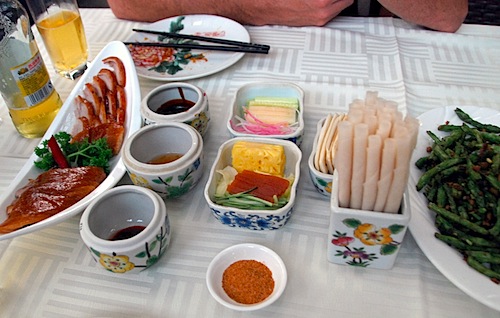
Hua Jia Yi Yuan’s Peking duck toppings.
Gui Jie has a lot of courtyard restaurants, and the atmosphere is fantastic.

The interior of Hua Jia Yi Yuan.
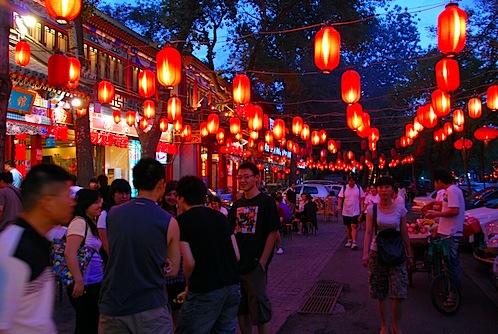
Red lanterns add to the atmosphere on Gui Jie.
We also ate at one of the most popular Peking duck restaurants in all of Beijing: Dadong Duck Restaurant. Our verdict? Unremarkable and overpriced, though you do get free drinks while you are waiting for your table. That’s all we have to say about that.
We enjoyed many a meal by Qian Hai Lake (also sometimes called Hou Hai–the two lakes are adjoined so you can refer to it by either name). Very touristy, but if you look hard enough, you can find budget restaurants. The evening light on the lake is really beautiful, and you can watch locals go for a dip in the water.
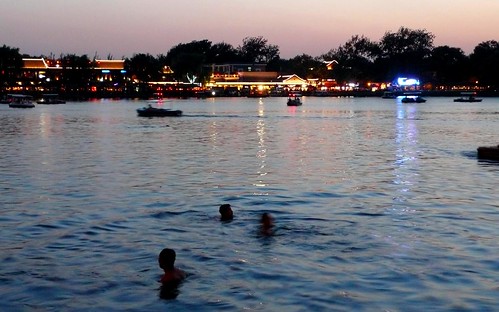
Locals taking a dip in Qian Hai at sundown.
Not all of our meals out consisted of Peking duck. We also had some good, old fashioned jiao zi (dumplings). The best place we ate (by far) was a small shop called Xia’r Lao Man (translation: “Filling Always Full” or “Stuffing Always Stuffed”), where we had jiao zi with pork and fennel stuffing (yum), and an incredible liang ban (cold salad) of cabbage, bean sprouts, cilantro, sesame oil, garlic, and peanuts.
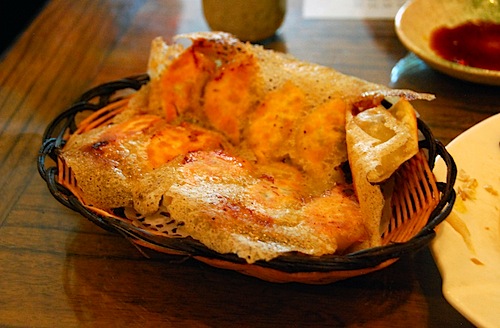
Pork and fennel guo tie (potstickers). They come out of the kitchen like this, the dumplings connected by a solid sheet of fried. Mmm…fried…
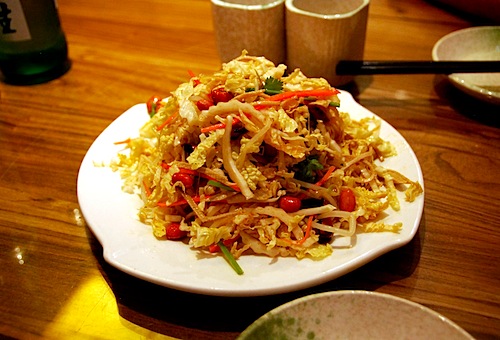
Lao man’r liang ban salad. So refreshing on a hot summer day!
Beijing food just can’t compare to the weirdness of some of the food we ate in the south, or the scariness of the food in Chongqing, but they sure try hard to compete on Wangfujing snack street, where you can get LIVE scorpions on a stick (seriously, they wiggle around on there), topped off with a seahorse.
Of course, if you’re longing to live on the wild side without risking a scorpion sting, you can always order “The palace explodes the diced chicken.”

Or impress your friends by telling them you ate the little-known “Agrocgble aergerita.” With fish heads, of course.


